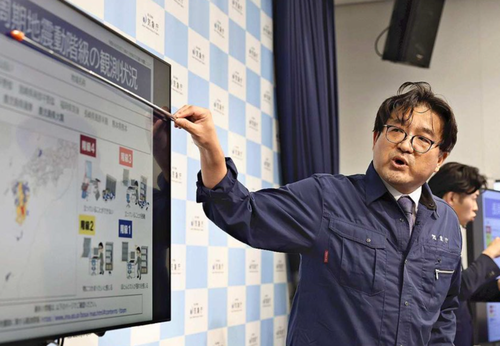Japan On High Alert For Possible Catastrophic Magnitude 9 Megaquake
Update (0730ET):
And just moments ago…
As we in Japan are on the alert for a possible mega quake, my phone’s emergency alarm goes off. M5.3 shakes Kanagawa Prefecture with the epicenter 10 km according to Japan Met Agency’s preliminary announcement. Tokyo shook too and many jumped in fear. https://t.co/hFlFPaPkbK
— michiyo ishida (@MichiyoCNA) August 9, 2024
* * *
Japan issued the first-ever warning for a “megaquake” off the country’s Pacific coast following Thursday’s magnitude 7.1 earthquake near the southern island of Kyushu.
Prime Minister Fumio Kishida canceled a trip to Central Asia on Friday following yesterday’s quake warning. That doesn’t necessarily mean a massive quake is imminent, but instead, the probability was higher than average.
The Japan Meteorological Agency issued a megaquake advisory on Thursday, warning that “if a major earthquake were to occur in the future, strong shaking and large tsunamis would be generated.”
It added: “The likelihood of a new major earthquake is higher than normal, but this is not an indication that a major earthquake will definitely occur during a specific period of time.”
The advisory was posted overnight after a 7.1 magnitude quake rattled the southern island of Kyushu, which reportedly caused no major damage.
The megaquake is known as the ‘Nankai trough’ and could trigger more damage than the Fukushima quake in 2011. The area where the Philippine sea plate subducts underneath the Eurasian continental plate experiences tremors every 100 to 150-year cycles.
BBC News cited government experts forecasting a 70% to 80% chance of a megaquake measuring magnitude 8 or 9 in the next three decades. The worst-case scenario suggests several hundred thousand people could be killed, with economic damages exceeding $13 trillion.
“The history of great earthquakes at Nankai is convincingly scary,” geologists Kyle Bradley and Judith A Hubbard wrote in their Earthquake Insights newsletter, adding there was no need for immediate panic.
Bradley and Hubbard wrote that there is only a “small probability” that Thursday’s magnitude 7.1 was a foreshock, noting, “One of the challenges is that even when the risk of a second earthquake is elevated, it is still always low.”
Meanwhile, megaquake threats surged in media headlines around the time of Kishida’s ultra-low approval ratings and faced challenges to his leadership in a ruling party presidential election next month.
Any major quake disaster in Japan would immediately end the Bank of Japan’s interest rate hiking cycle. The BoJ recently raised borrowing costs for the first time since 2007, which sparked the unwinding of the popular Dollar-Yen carry trade, resulting in shockwaves across financial assets worldwide.
Tyler Durden
Fri, 08/09/2024 – 07:25

